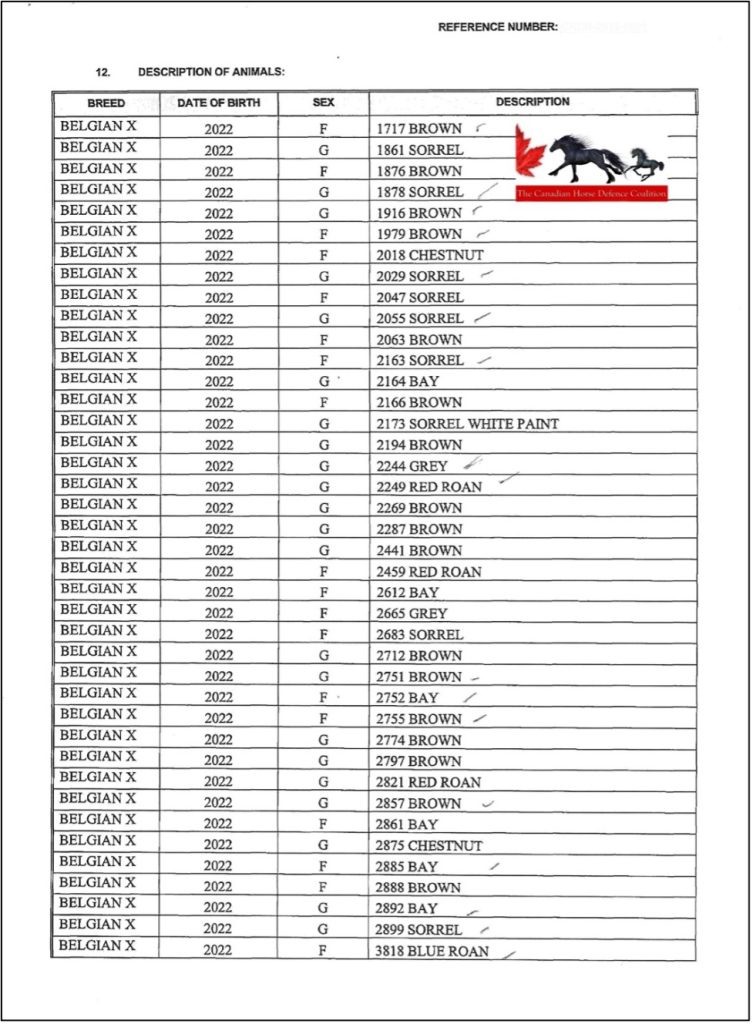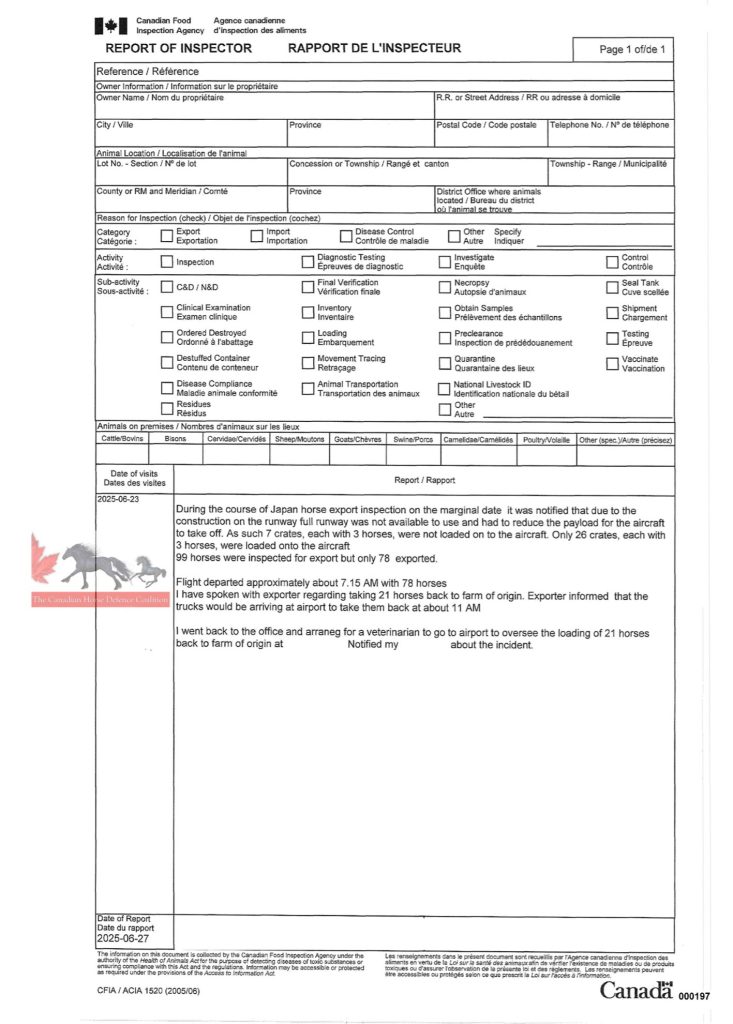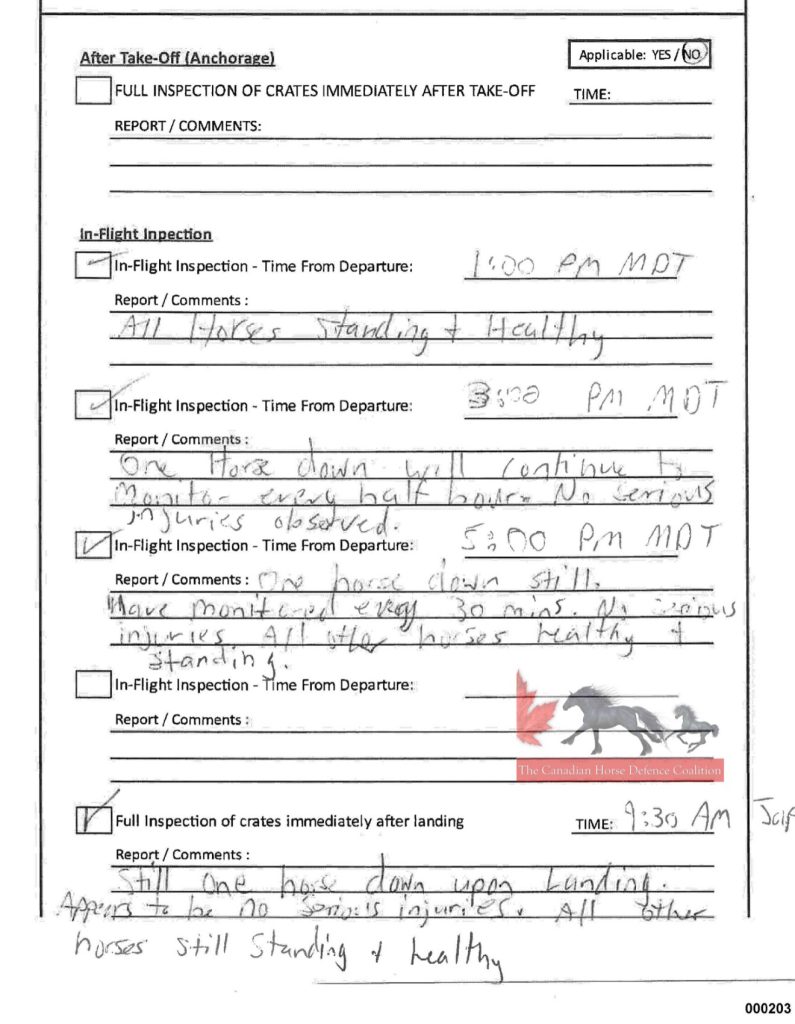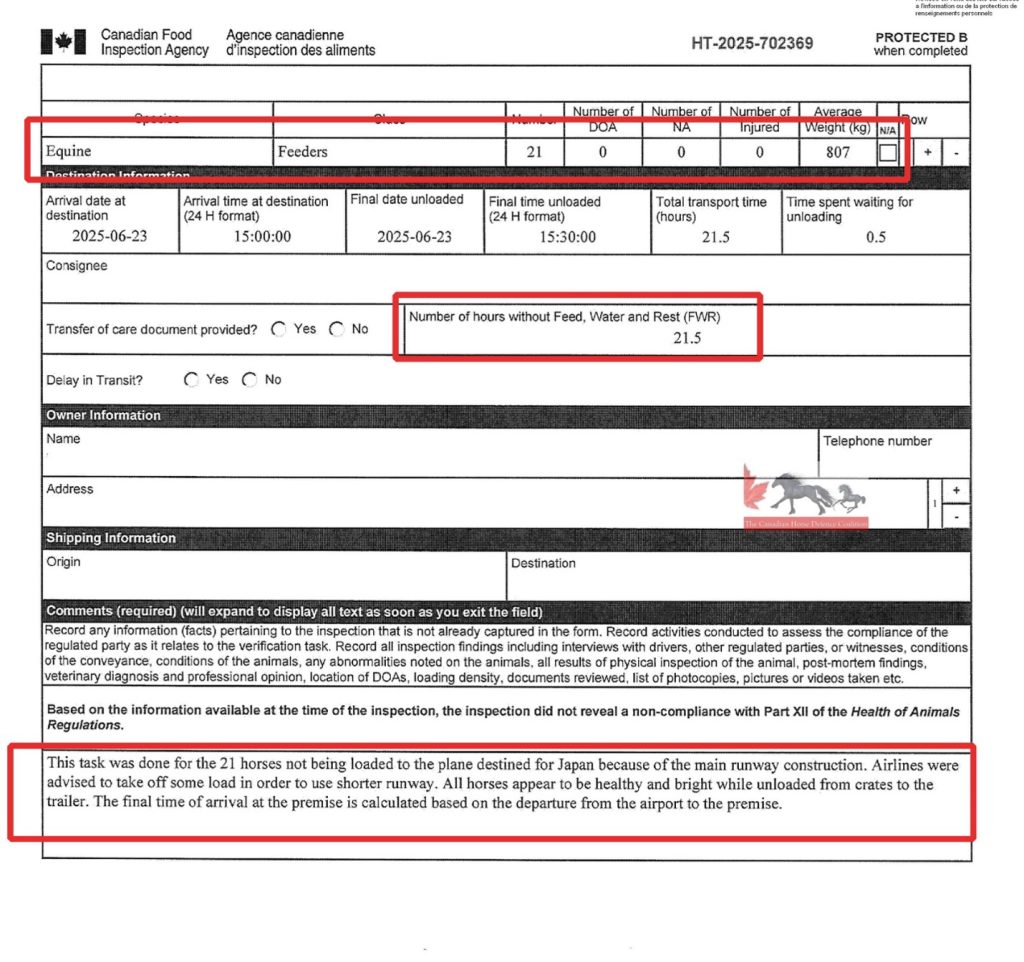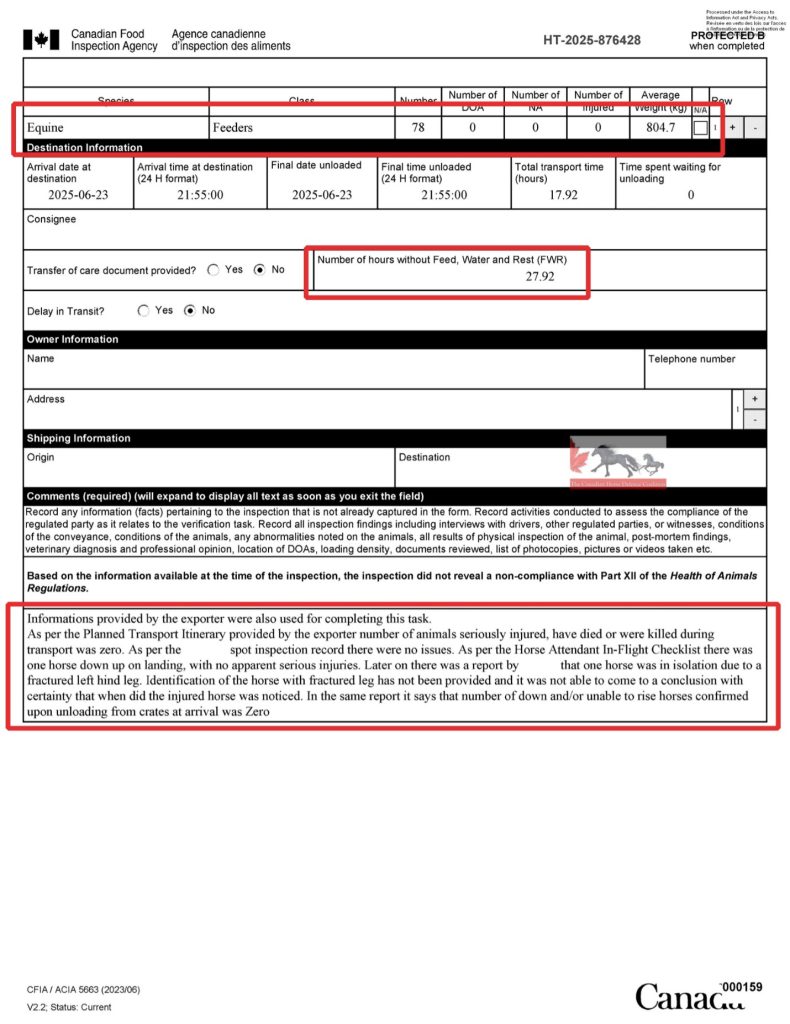Horse Suffers Broken Leg
Flight Squeaks Under 28 Hours Allowed
Photo Gereen Anderson
At 7:28 a.m. on June 23, 2025, Korean Air Cargo flight 9214 departed the Edmonton Airport for the Kitakyushu Airport in Japan, one hour and thirteen minutes later than scheduled. The horses it was carrying were young, described as Belgian crosses, born in 2023, with an average weight of 807 kg (1779 lbs). Three horses were loaded in each wooden crate.
If all times recorded were accurate, the total food, water, and rest interval for the horses on this flight was 27.92 hours (27 hours and 55 minutes), just barely under the maximum of 28 hours allowed.
One horse suffered a broken leg as a result of this flight.
Flight Delayed
While the horses were being loaded on the aircraft, redacted advised the exporter they had just received notice that the main runway in Edmonton was under construction, and for this reason redacted must use the shorter runway, resulting in a smaller payload for takeoff.

Of the ninety-nine horses who had been transported to the airport for this shipment, 7 crates containing 21 horses were removed and returned to the premises of origin.
They were back on food, water and rest at 3:30 p.m. on Monday, June 24.The food, water, and rest interval for these horses was 21.5 hours.
This was a direct flight to Japan, and from takeoff to landing, was 10 hours and 59 minutes in duration.
Injured Horse
At 3 p.m. (MDT) an entry in the attendant’s checklist noted that one horse was down; no serious injuries were observed but they would monitor every half hour.
At 5 p.m. the horse was still down. The horse had been monitored every 30 minutes and again, no serious injuries were reported.
An email sent on July 8, 2025 stated that when the attendant accompanying the horses on this flight discovered the horse down, a livestock stick was used in an attempt to get him up. When one of the other horses in the crate became agitated, the attendant decided no further attempts to get the horse up would be made in order to keep the stress levels of the horses in the crate at a minimum.
No horses were observed standing on the down horse at that time, but, without constant monitoring, it would be foolhardy to assume the horse had never been stepped on while down.
Conflicting Reports
“As per the Planned Transport Itinerary provided by the exporter number of animals seriously injured, have died or were killed during transport was zero.
As per the spot inspection record there were no issues. As per the Horse Attendant In-Flight Checklist there was one horse down up on landing, with no apparent serious injuries. Later on there was a report by that one horse was in isolation due to a fractured left hind leg.
Transportation of Animals form, comments section
The completed Planned Transport Itinerary provided by the exporter did not indicate any deaths or injuries had occurred. However the Canadian Food Inspection Agency (CFIA) received a report from Japanese Authorities that one horse “is in isolation due to a fractured left hind leg which was observed upon unloading from crates at arrival.”
Fractures are painful – how was this horse removed from the crate and transported from the airport to the quarantine station?
From the documents we received, it is difficult to determine exactly where and when the horse sustained the leg fracture. What is clear, however, is that another horse suffered terribly as a result of these unnecessary and cruel exports.
Further details of the horse’s condition or outcome were not provided to us.
Photo courtesy Tove Reece
Photos courtesy Gereen Anderson




